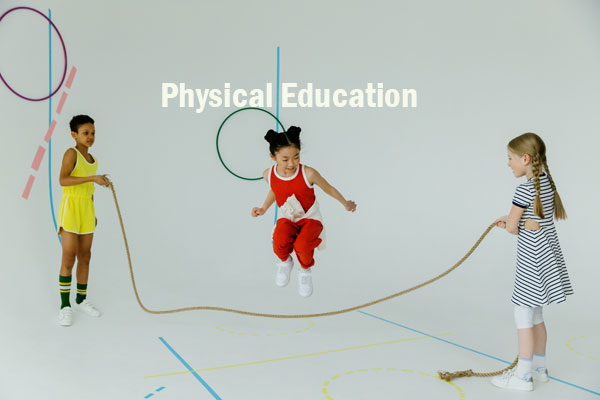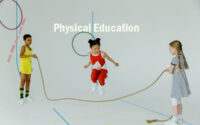Physical Education Sample Question Papers
Download all Physical Education Sample Question Papers here. The Candidates who are applying for Physical Education vacancies, need to start their preparation by downloading Sample Question Papers. For that purpose, we are providing Physical Education Sample Question Papers.

We have given the solutions for Sample Question Papers to make your preparation efficient. Click here to Download the Sample Question Papers from the attached pdfs. The Physical Education Sample Question Papers attached in the PDF Format so the aspirants can download quickly.
Along with these Physical Education Sample Question Papers, we have attached Physical Education Syllabus and Exam Pattern. Students of class 11 and class 12 also download these Sample Question Papers for their examination preparation.
These Physical Education Sample Question Papers are also be helpful for AQA GCSE examination. Applicants of TRB or TET may use this Physical Education Sample Question Papers.
Sample Question Papers on Physical Education
1. The process by which a child acquires new responses or modifies old responses is called……………… .
(A) Education
(B) Learning
(C) Conditioning
(D) Adaptation
2. The present President of the International Olympic Committee is……………… .
(A) Suresh Kalmadi
(B) Juan Antonio Samaranch
(C) Avery Brundage
(D) Jacques Rogge
3. The muscle tissue is distinguished from other tissues by the ability to :
(A) Perform at a high speed
(B) Engage in sustained activity
(C) Contract and perform mechanical work
(D) Perform at least resistance
4. How many times more energy is released during oxidative process than released during anaerobic glycolysis ?
(A) 15 times
(B) 18 times
(C) 21 times
(D) 12 times
5. With which of the following the lung volumes does not vary ?
(A) Age
(B) Gender
(C) Body size
(D) Posture
6. The term ergogenic aid describes substances or procedures that improve :
(A) Physical work capacity
(B) Physiologic function
(C) Athletic performance
(D) All of the above
7. If an athlete exposes a just injured limb to heat, he will :
(A) Aggravate its swelling
(B) Worsen its condition
(C) Only delay its recovery
(D) Render it liable to infection
8. Turning of the foot so that the sole faces outward is a movement called :
(A) Extension
(B) Protraction
(C) Aversion
(D) Abduction
9. Levers in the body produce force to………………. .
(A) Create movement
(B) Overcome resistance
(C) Accelerate an object’s velocity
(D) Catapult an object into space
10. A sprinter in ‘SET’ position, having centre of gravity outside the based support has :
(A) Stable position
(B) An unstable position
(C) A semi-stable position
(D) A neutral position
11. In the process of motor skill improvement the speed of joint actions is controlled by :
(A) Nervous system
(B) Muscular system
(C) Skeletal system
(D) Respiratory system
12. The range of vertical displacement of the body in running is :
(A) greater than in walking
(B) lesser than in walking
(C) same as in walking
(D) equal as in walking
13. Associative theories of learning are based on the premise of………………. .
(A) Individual environment bond
(B) Stimulus and response bond
(C) Brain-Mind bond
(D) Sensory-Perception process bond
14. What dimensions of personality do, complex thought processes, rational thinking and creativity, reflect :
(A) Social Dimension
(B) Mental Dimension
(C) Intellectual Dimension
(D) Emotional Dimensions
15. Which of the following is not a key factor in the development of group dynamics ?
(A) Forming
(B) Storming
(C) Confirming
(D) Performing
16. Which of the following provides comprehensive learning experiences ?
(A) Syllabus
(B) Course content
(C) Curriculum
(D) Course material
17. In curriculum development. What is resisted the most from all corners ?
(A) Innovation
(B) Experimentation
(C) Research
(D) Change
18. Health is basically a responsibility of the :
(A) State
(B) Parents
(C) Individual
(D) Community
19. Which of the following conditions is life threatening ?
(A) Heat Radiation
(B) Heat Exhaustion
(C) Heat Stroke
(D) Heat Loss
20. Our hands generally get contaminated with……………….. .
(A) Bacteria
(B) Soil and dirt
(C) Oil
(D) Chemicals
| GK | Practice Set |
| MCQ | Mock Test |
| Selected Question | Previous Question |
| Typical Question | Old Papers |
| Test Papers | Sample Question |
| Important Questions | Model Question |
| Question Bank |
21. Who of the following need the most recreation ?
(A) Infants and children
(B) Girls and women
(C) Labourers and working people
(D) Athletes and players
22. Which of the following sports activities cannot be categorized as anaerobic :
(A) Sprinting
(B) Squats and bench press repetition
(C) Running a Marathon
(D) Free style swimming for a beginner
23. For maximizing power production which of the following training exercises is useful ?
(A) Plyometric exercise
(B) Weight training
(C) Resistance training
(D) Iso-kinetic training
24. Apart from physical and skill training. An athletes efforts to prepare for competition will become zero if due emphasis is not placed on :
(A) Adjustment training
(B) Psychological training
(C) Socialization
(D) Inter-personal relationship
25. Isometric training is performed against :
(A) A movable object
(B) An immovable object
(C) A static object
(D) A dynamic object
26. “Asking of a good question”, falls under the definition of :
(A) Science
(B) Experiment
(C) Research
(D) Search
27. To solve problems that have direct bearing on the context in which research is to be conducted, we use :
(A) Applied Research
(B) Fundamental Research
(C) Qualitative Research
(D) Action Research
28. The infinite number of individuals or items which serve as sources of data in a study technically are called :
(A) Sample
(B) Population
(C) Statistics
(D) Data
29. If we deduct the lowest score from the highest score of a distribution we would get the :
(A) Variance
(B) Range
(C) Average
(D) Standard deviation
30. Which of the following situations reflects zero correlation ?
(A) Academic grade vs. Intelligence
(B) Butterfly stroke vs. I.Q.
(C) Hours of Study vs. Examination success
(D) Training vs. Performance
31. Area covered under +1σ and –1σ in a Normal Probability curve is :
(A) 34.13%
(B) 95%
(C) 68.26%
(D) 27.26%
32. A devise or technique used to measure the performance, skill level, or knowledge of a learner is called :
(A) Implement
(B) Tool
(C) Observation
(D) Measurement
33. A high amount of lactic acid present in the blood reflects………………… .
(A) Fatigue
(B) Restlessness
(C) Discomfort
(D) Inertia
34. Name the instrument used to measure sitting height……………… .
(A) Goniometer
(B) Stadiometer
(C) Spirometer
(D) Sphygno-manometer
35. The apex body controlling and directing amateur sports in India is………………… .
(A) Organisation of Indian Sports
(B) All India Council of Sports
(C) Indian Olympic Association
(D) Association of Indian Sports Federations
36. The Master teachers in the World are known for their……………….. .
(A) Fund of knowledge
(B) Wisdom and intelligence
(C) Methodology of Teaching
(D) Personality and character
37. In the total scheme of physical education, the supervisor must give highest priority to………………… .
(A) Laid down standards
(B) Duties assigned to them
(C) Human relations
(D) Objectives of supervision
38. I. “Physical Education should prepare the child for Supreme Effort”.
II. “Physical Education ensures a child’s physical, motor, mental and social development”.
(A) Both I and II are correct
(B) I is correct and II is wrong
(C) II is correct and I is wrong
(D) Both I and II are wrong
39. I. “A balanced diet generally provides adequate mineral intake”.
II. “Athletes take diet supplements to replenish minerals”.
(A) I is correct and II is wrong
(B) II is correct and I is wrong
(C) I and II are correct
(D) I and II are wrong
40. I. “De Coubertin : the father of Modern Olympic Games – was against women’s participation in sports.
II. “So women have not defied ancient Olympic tradition”.
(A) I is correct and II is wrong
(B) II is correct and I is wrong
(C) I and II are correct
(D) I and II are wrong
41. Which of the following describes a physical benefit of physical activity ?
(A) Enhanced body shape
(B) Understanding of rules
(C) Relieves stress and tension
(D) Develops friendships
42. Rousseau is referred to as father of :
(A) Idealism
(B) Realism
(C) Pragmatism
(D) Naturalism
43. Structured, organised, rule governed forms of play is called :
(A) Play
(B) Sport
(C) Games
(D) Recreation
44. Social interaction among people is called :
(A) Socialization process
(B) Social courtesy
(C) Social visits
(D) Social understanding
45. Which central Government agency deals with enhancement of sports in the country ?
(A) LNUPE
(B) MHRD
(C) SAI
(D) NSNIS
46. The kidneys and urinary bladder are components of this system :
(A) Endocrine
(B) Digestive
(C) Respiratory
(D) Excretory
47. Which of the following is not a function of skeletal muscle ?
(A) Produce movement
(B) Maintain posture
(C) Maintain body temperature
(D) Maintain body balance
48. Muscle activity is entirely dependant on :
(A) Supply of oxygen
(B) Nutritional inputs
(C) Environmental stimulations
(D) Nerve and blood supply
49. Exercise related stress fracture occurs in bones :
(A) In the spinal column
(B) Below the knee
(C) In the arm
(D) In the neck
50. Excess potassium ion is eliminated from the body by :
(A) the kidneys
(B) sweating
(C) the liver
(D) the spleen

